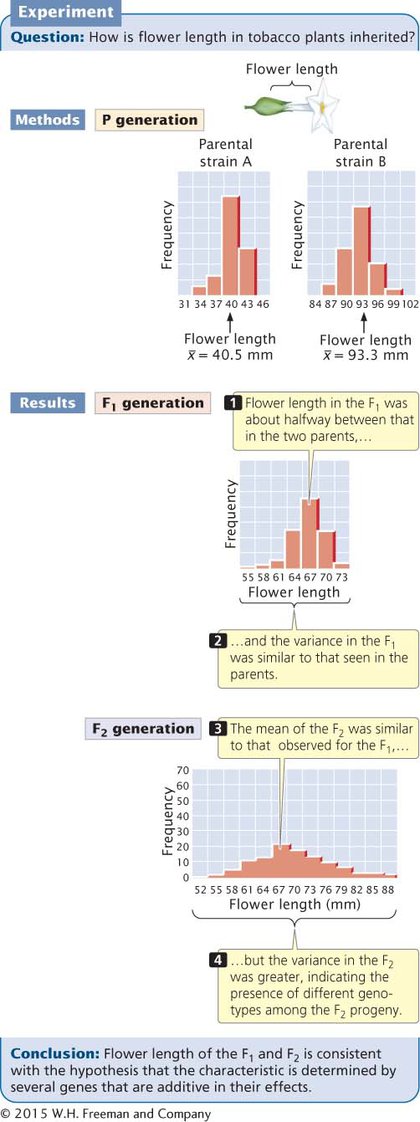Applying Statistics to the Study of a Polygenic Characteristic
Edward East carried out an early statistical study of polygenic inheritance on the length of flowers in tobacco (Nicotiana longiflora). He obtained two varieties of tobacco that differed in flower length: one variety had a mean flower length of 40.5 mm, and the other had a mean flower length of 93.3 mm (Figure 17.10). Each of these two varieties had been inbred for many generations and was homozygous at all loci contributing to flower length. Thus, there was no genetic variation in the original parental strains; the small variations in flower length within each strain were due to environmental effects on flower length.

When East crossed the two strains, he found that the mean flower length in the F1 was about halfway between those of the two parents (see Figure 17.10), as would be expected if the genes determining the differences in the two strains were additive in their effects. The variance of flower length in the F1 was similar to that seen in the parental strains because all the F1 had the same genotype, as did each parental strain (the F1 were all heterozygous at the genes that differed between the two parental varieties).
East then interbred the F1 to produce F2 progeny. The mean flower length of the F2 was similar to that of the F1, but the variance of the F2 was much greater (see Figure 17.10). This greater variation indicates that not all of the F2 progeny had the same genotype.
East selected some F2 plants and interbred them to produce F3 progeny. He found that flower length in the F3 depended on flower length in the plants selected as their parents. This finding demonstrated that flower-